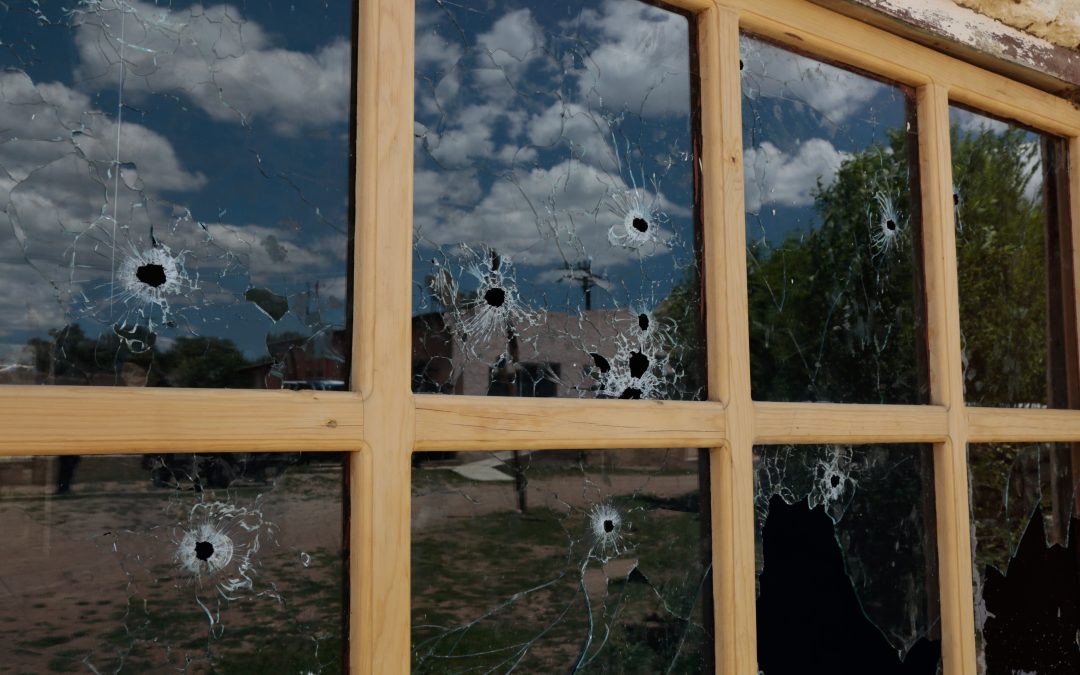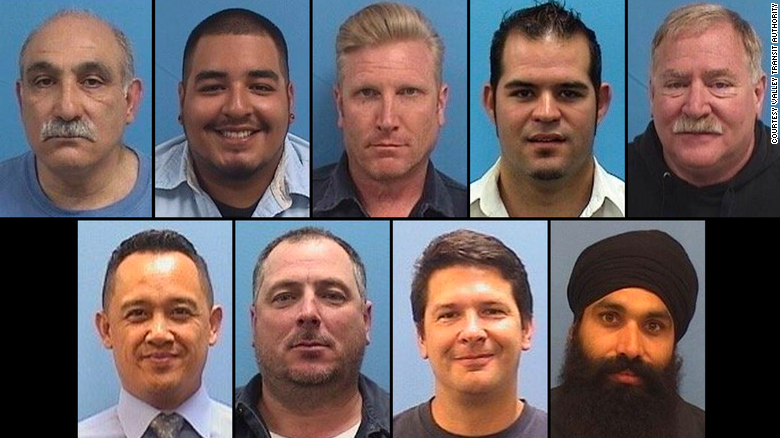
Proactive Strategies for Preventing Workplace Violence
Proactive Strategies for Preventing Workplace Violence
Picture this: a workplace where employees feel respected, safe, and valued. Sounds good, right! Unfortunately, this is not always an ideal situation. The study by the Occupational Safety and Health Administration (OSHA) revealed that workplace violence affects about 2 million people every year in the United States alone. These figures may be scary and mitigate your determination to conduct business. Fear not, as there are well-proven strategies that you can implement to safeguard your employees and organization. This article will discuss five effective methods to create a working environment where safety reigns supreme.
Establishing a Comprehensive Prevention Policy
Imagine a castle without robust walls; it will be prone to attacks. Similarly, the organization and employees are at risk without a workable prevention policy in the workplace. Policies are internally created and customized to fit the nature of your business. It is important to note that there is no one-size-fits-all policies, as different organizations engage in activities with varied levels of risk. Studies have shown that workplaces with clear violence policies report lower incidences. Journal of Occupational and Environmental Medicine indicates that companies with violence policies experience 40% fewer cases than those without such guidelines.
The policy should define terms such as harassment, verbal abuse, and physical violence, which employees experience in the workplace. Notably, this policy document should also clearly indicate the reporting procedure, the disciplinary action to be taken, and the supportive mechanism for the victims. While some human resource directors might consider this a lot of work, it improves productivity. We, as Lauth, will conduct a proper violence assessment to give you insight into how well-prepared you are for incidences of violence.
Training and Creating Awareness among the Employees
It is self-fulfilling for a business owner to have a vigilant team that can detect threats. Employee training equips them with the necessary skills, such as interpersonal skills and conflict management, which makes them handle issues that could result in violence. The leading cause of violence within the workplace is a lack of understanding among the workforce, and appreciating diversity lessens violence. Investing in training saves time that could have been used to solve the conflict. For example, the National Institute for Occupational Safety and Health (NIOSH) study showed that companies that invested in workplace violence training experienced a 70% reduction in workplace violence. Arm your team with knowledge!
Conducting Rigorous Risk Assessment
Perhaps you cannot perceive the inherent risk that violence can bring to your business because it has never happened. Or better put, take into consideration an employee who gets injured while at work due to an incidence of violence, such as a physical altercation. Picture that regarding litigations related to work injury benefit claims, and I am sure you will appreciate the need to fortify your defense. A regular risk assessment identifies the vulnerabilities within your business. Through our experienced risk assessment investigator, we identify weak points in your system and provide a comprehensive report on improvements.
Establishing Workplace Violence Prevention Teams
Having a dedicated team of guardians for preventing workplace violence is the best thing you can gift your business this year. This team is instrumental in ensuring petty issues resulting from violence are handled out immediately before they escalate. A small problem, such as miscommunication, can snowball into physical or verbal abuse. It is prudent to establish a workplace violence prevention team consisting of experts from different departments, and their primary role would be to develop and implement violence prevention strategies.

Organizations with a workable workplace violence prevention team are good at establishing potential threats before they happen. This is supported by the Society for Human Resource Management (SHRM), which indicated that 80% of the companies with violence prevention teams reported a decrease in workplace violence incidences. As a starting point, develop a violence prevention team and track the cases within the first year. The outcome will be appealing, and for you to achieve this, we suggest helping you with a corporate culture audit to serve as a mirror of exactly how prepared you are in regard to workplace violence.
Promoting a Culture of Respect and Support
Build solidarity among your employees. Being united is a compact pillar in mitigating violence in the workplace. Successful organizations foster a culture of respect and support, which essentially prevents violence in the workforce. This is because the employees feel valued, and they tend to propagate the value of respect to the advantage of the business. How do you cultivate a culture of support and respect? This happens through encouraging open communication and enforcing a zero-tolerance policy for harassment or discrimination. These approaches create a sense of belonging, preventing conflict from escalating into violence.
Conclusion
It is undeniably true that workplace violence impedes an organization’s growth and lowers productivity. As the workforce continues to become more diverse, the chances of conflicts, hence violence, would continue in the workplace. Therefore, it is wrong to sit and wait until an incident happens in order to act. This article has highlighted the different strategies you can adopt for your enterprise and stand out in averting the repercussions that tag along with violence. Lauth can help you with your violence assessment, risk assessment, and corporate audit to mitigate violence.







 So far this year, there have been
So far this year, there have been  The Department of Homeland Security also have their own guidelines to how private citizens should react during an active shooter event:
The Department of Homeland Security also have their own guidelines to how private citizens should react during an active shooter event:  Frozen with fear—it’s something we can all relate to. After all, many working people today are not acclimated to the viable, potential threat of an active shooter in the workplace. Aggressive, hyper-realistic training can compound the anxiety triggered by the increased probability of being involved in an active shooter event. That’s why Barton and other like-minded professionals epitomize on a feeling of safety, with straightforward and honest training that will leave any employee feeling prepared. “The chief learning officer has a huge opportunity to lead a discussion about workplace safety. [Employees] are yearning to be informed about how the world is changing and how threats get processed at work…You want to have a subject matter expert who works with law enforcement and can speak the language of all employees.”
One thing that employers often overlook when considering active shooter training programs is a company that curtails the training to their individual brick and mortar location. As part of what they call “red ball drills,” Experior Group will evaluate the property to identify the specific issues that might present during an active shooter event. “The problems of a commercial building are not the problems of a hospital or a school,” Mutchnick says. “Run, hide, fight is s giant blanket they throw over the problem as a response, but it doesn’t deal with any site-specific issues.” All training dispensed by Experior Group is tailor-made for the culture and physical context of any business. When these issues have been identified, the instructor can direct employees the best manner of exit, should they have that option.
Frozen with fear—it’s something we can all relate to. After all, many working people today are not acclimated to the viable, potential threat of an active shooter in the workplace. Aggressive, hyper-realistic training can compound the anxiety triggered by the increased probability of being involved in an active shooter event. That’s why Barton and other like-minded professionals epitomize on a feeling of safety, with straightforward and honest training that will leave any employee feeling prepared. “The chief learning officer has a huge opportunity to lead a discussion about workplace safety. [Employees] are yearning to be informed about how the world is changing and how threats get processed at work…You want to have a subject matter expert who works with law enforcement and can speak the language of all employees.”
One thing that employers often overlook when considering active shooter training programs is a company that curtails the training to their individual brick and mortar location. As part of what they call “red ball drills,” Experior Group will evaluate the property to identify the specific issues that might present during an active shooter event. “The problems of a commercial building are not the problems of a hospital or a school,” Mutchnick says. “Run, hide, fight is s giant blanket they throw over the problem as a response, but it doesn’t deal with any site-specific issues.” All training dispensed by Experior Group is tailor-made for the culture and physical context of any business. When these issues have been identified, the instructor can direct employees the best manner of exit, should they have that option.
 The last thing to consider when choosing an active shooter training program is the credibility behind the operations. Some of the most prolific risk management and security companies are headed by former members of law enforcement or the military. This experience with weapons and chaos not only validates the content for many employers, but also leaves employees empowered with credible knowledge. However, former navy seals and swat team leaders are not the only option when it comes to the instructor. Lauren Perry, the vice president of operations for Trident Shield, often addresses training groups. Her specific style and feminine touch opens the dialogue in any room, allowing individuals who might not respond to an aggressive, alpha males to remain engaged in the training, retaining the information that might one day save their lives.
Many employers often grapple with the cost of active shooter training for their employees. With many training programs averaging in the realm of thousands of dollars, employers often question whether or not active shooter training is even necessary. The Occupational Safety and Health Act of 1970 says, “Employers have the responsibility to provide a safe and healthful workplace that is free from serious recognized hazards.” The rise of active shooter events in the United States is most certainly recognized, with every event further inflaming the political world and conversations surrounding gun control. Given the statistics we’ve seen here, it appears as though it’s not a matter of if an active shooter even will occur, but when.
Carie McMichael is the Communication and Media Specialist for Lauth Investigations International. She regularly writes on private investigation and missing persons topics. For more information, please visit
The last thing to consider when choosing an active shooter training program is the credibility behind the operations. Some of the most prolific risk management and security companies are headed by former members of law enforcement or the military. This experience with weapons and chaos not only validates the content for many employers, but also leaves employees empowered with credible knowledge. However, former navy seals and swat team leaders are not the only option when it comes to the instructor. Lauren Perry, the vice president of operations for Trident Shield, often addresses training groups. Her specific style and feminine touch opens the dialogue in any room, allowing individuals who might not respond to an aggressive, alpha males to remain engaged in the training, retaining the information that might one day save their lives.
Many employers often grapple with the cost of active shooter training for their employees. With many training programs averaging in the realm of thousands of dollars, employers often question whether or not active shooter training is even necessary. The Occupational Safety and Health Act of 1970 says, “Employers have the responsibility to provide a safe and healthful workplace that is free from serious recognized hazards.” The rise of active shooter events in the United States is most certainly recognized, with every event further inflaming the political world and conversations surrounding gun control. Given the statistics we’ve seen here, it appears as though it’s not a matter of if an active shooter even will occur, but when.
Carie McMichael is the Communication and Media Specialist for Lauth Investigations International. She regularly writes on private investigation and missing persons topics. For more information, please visit